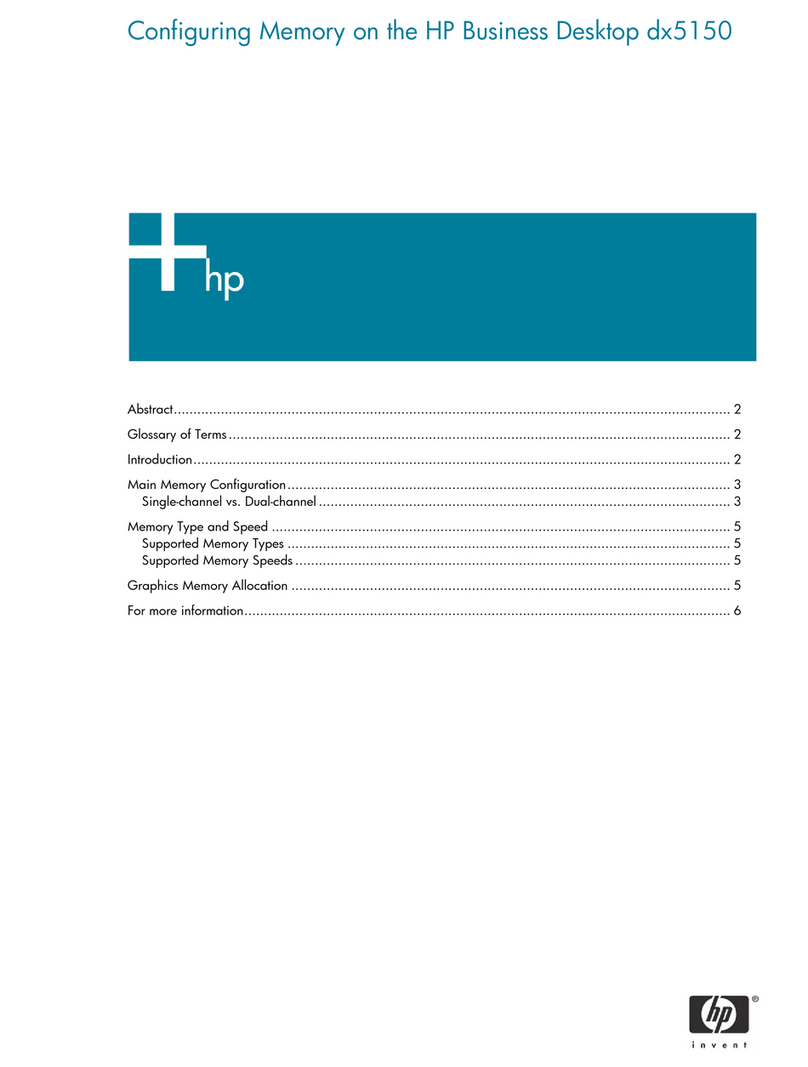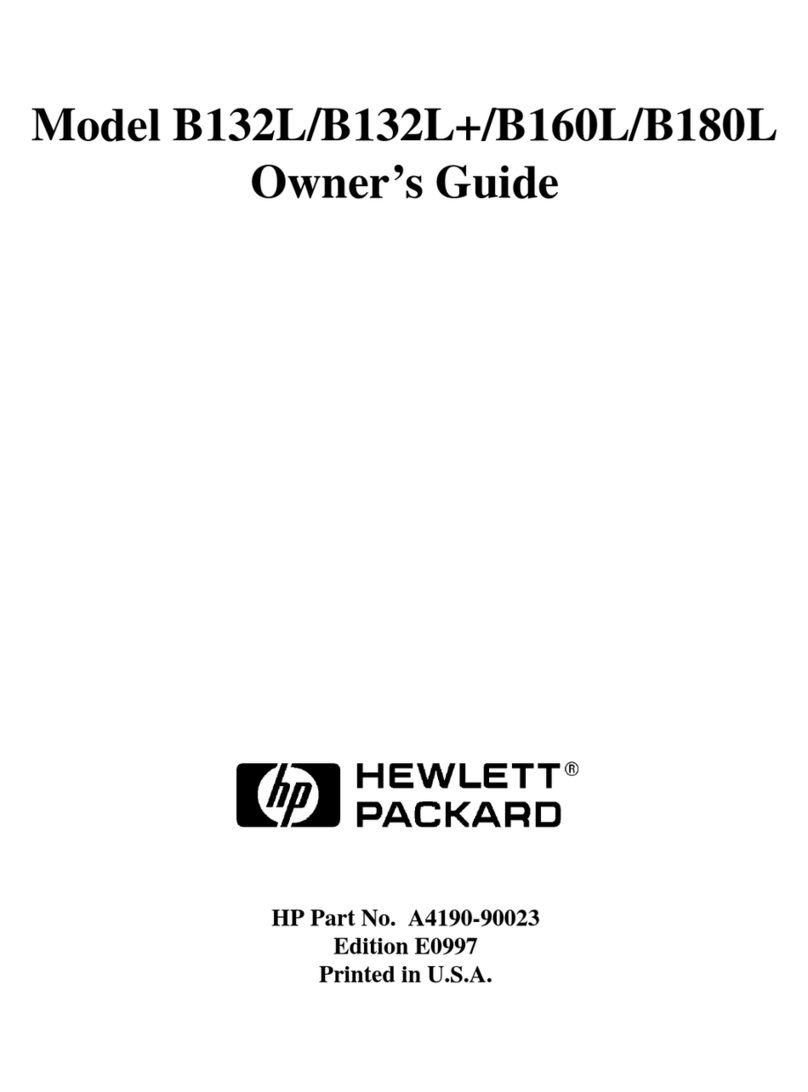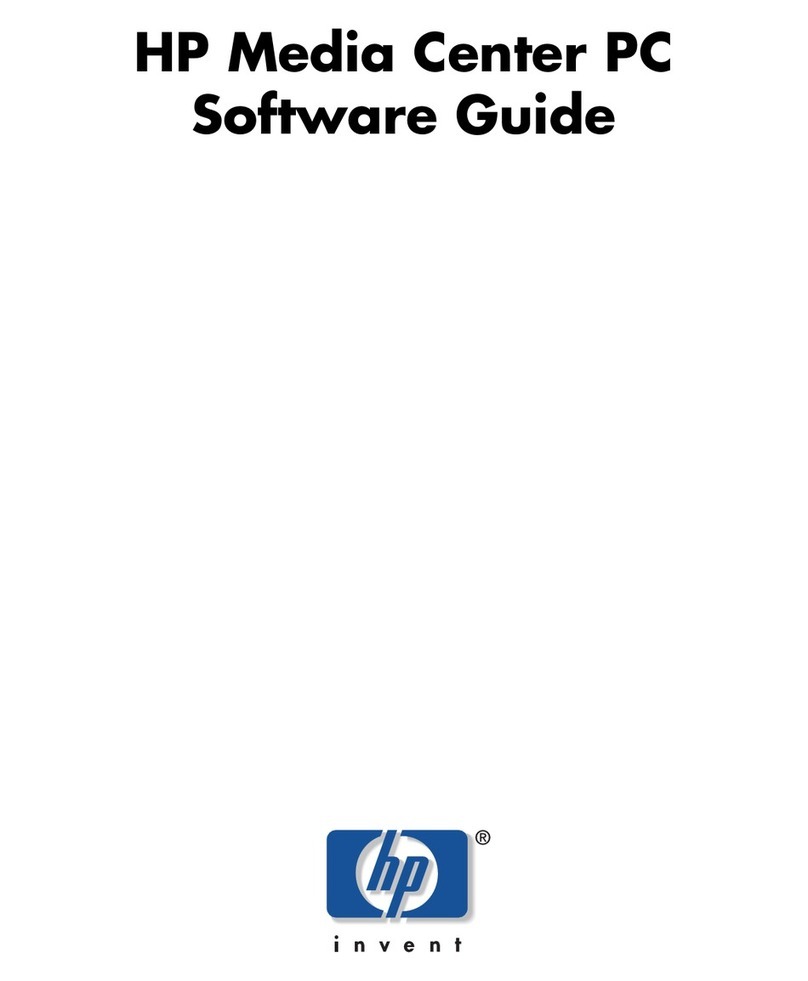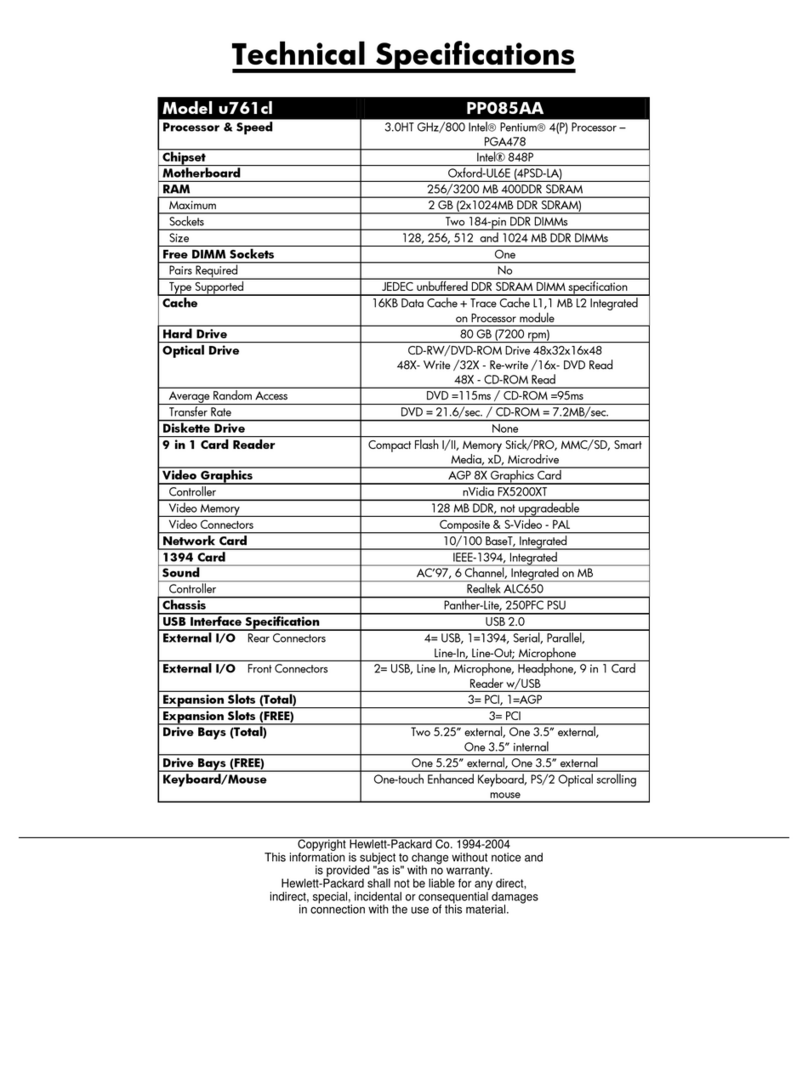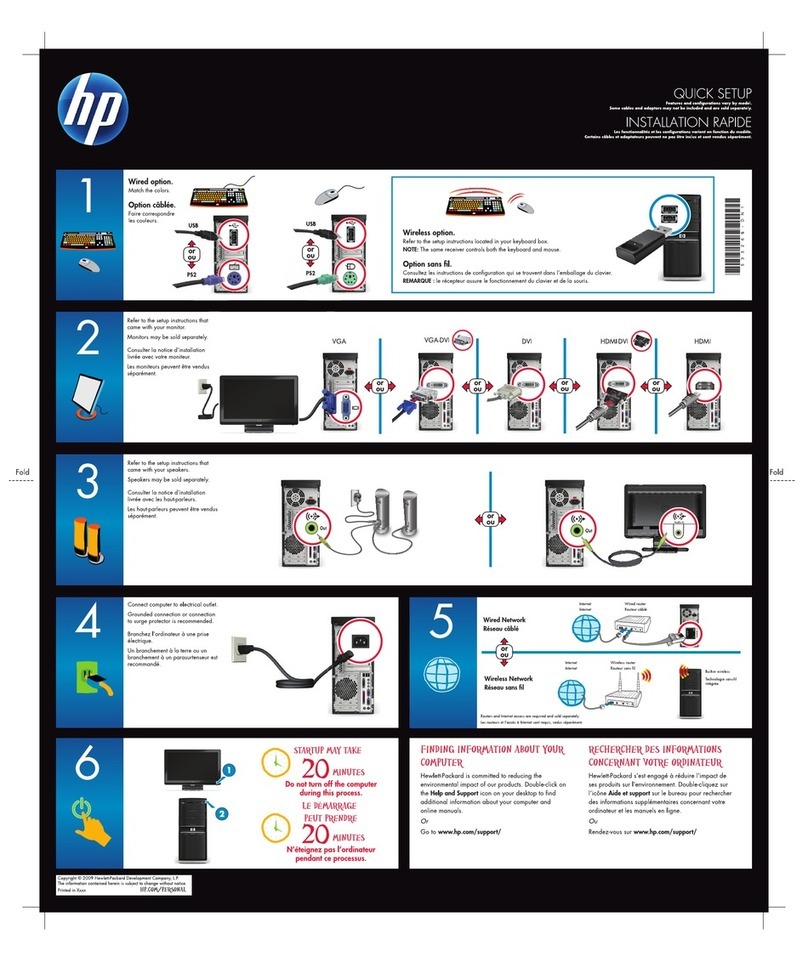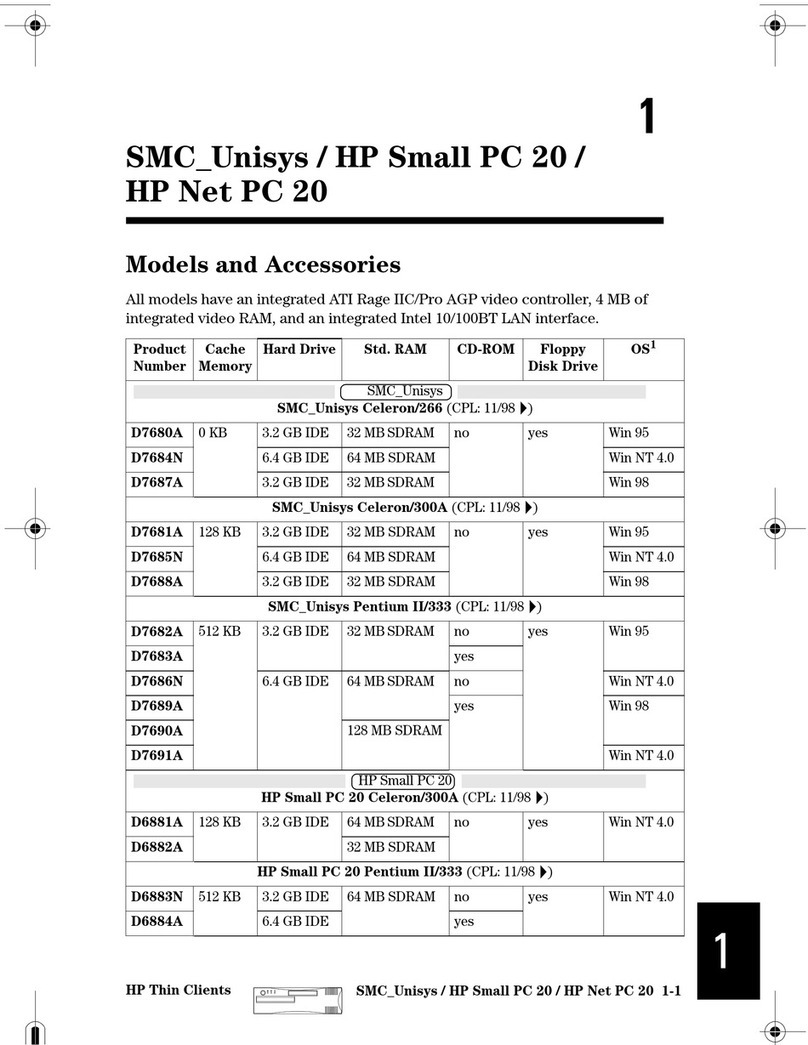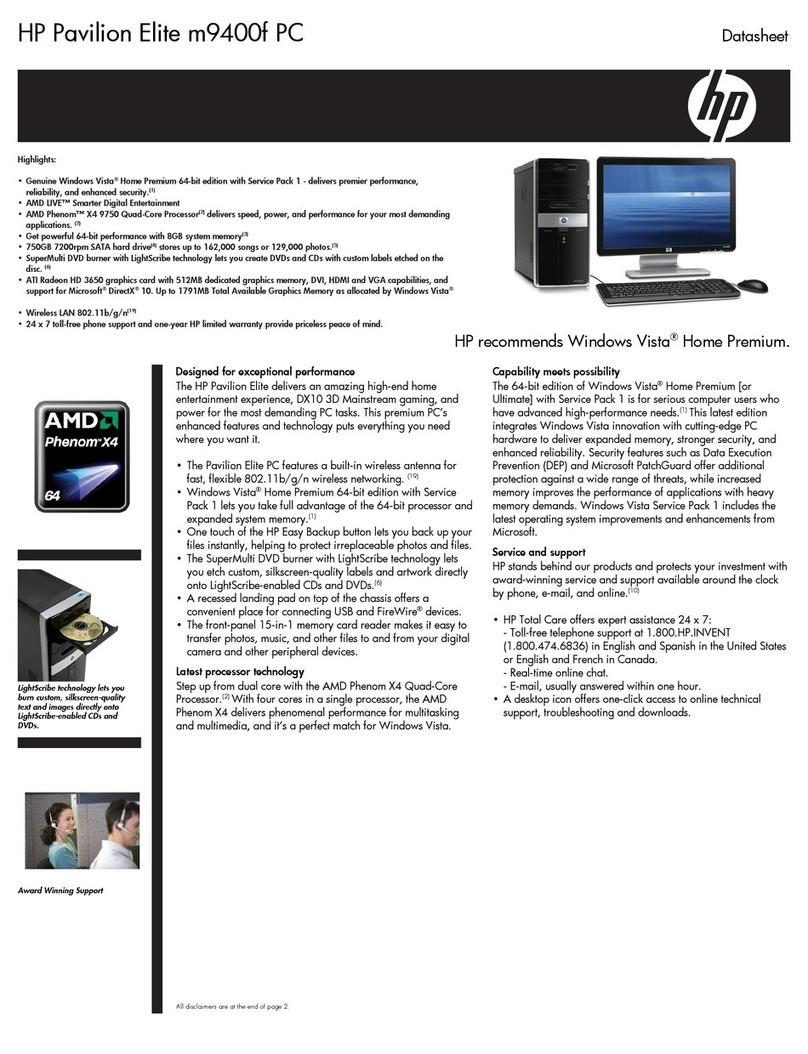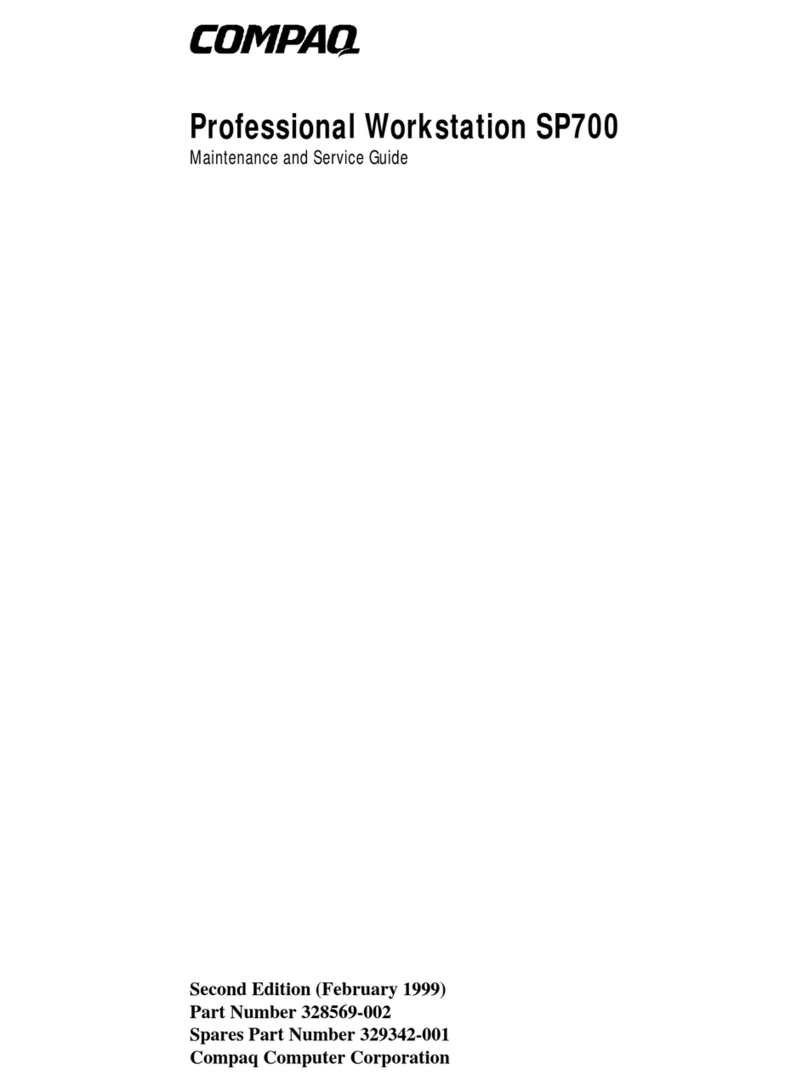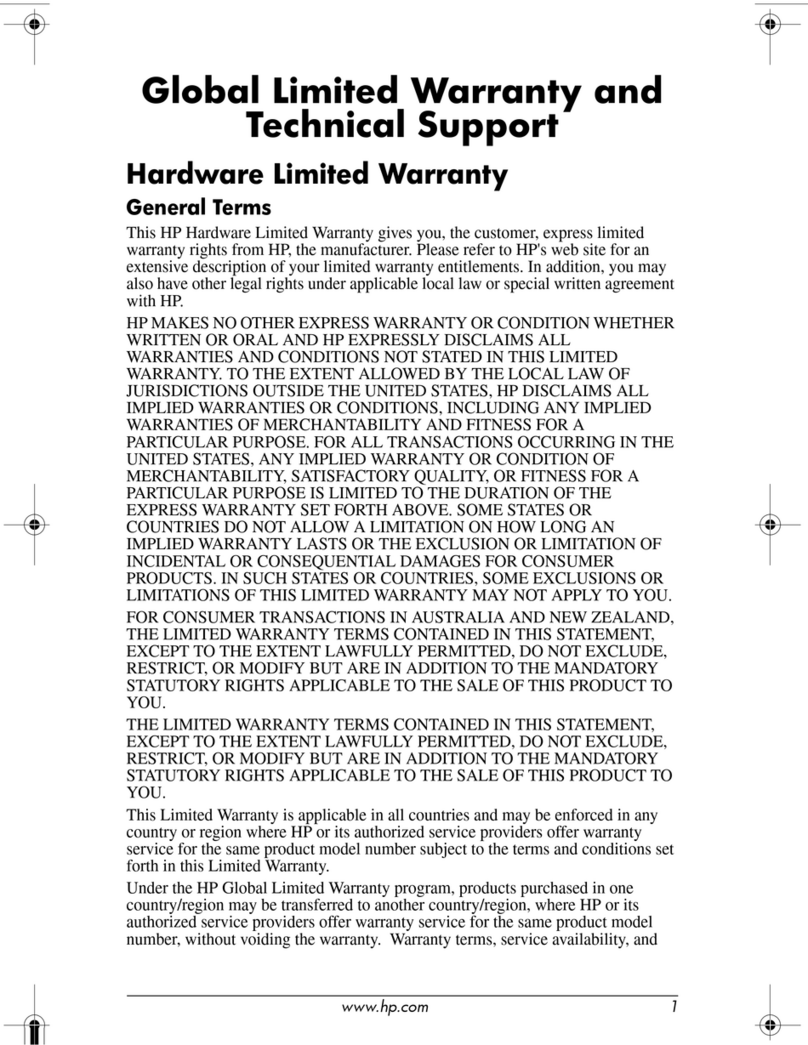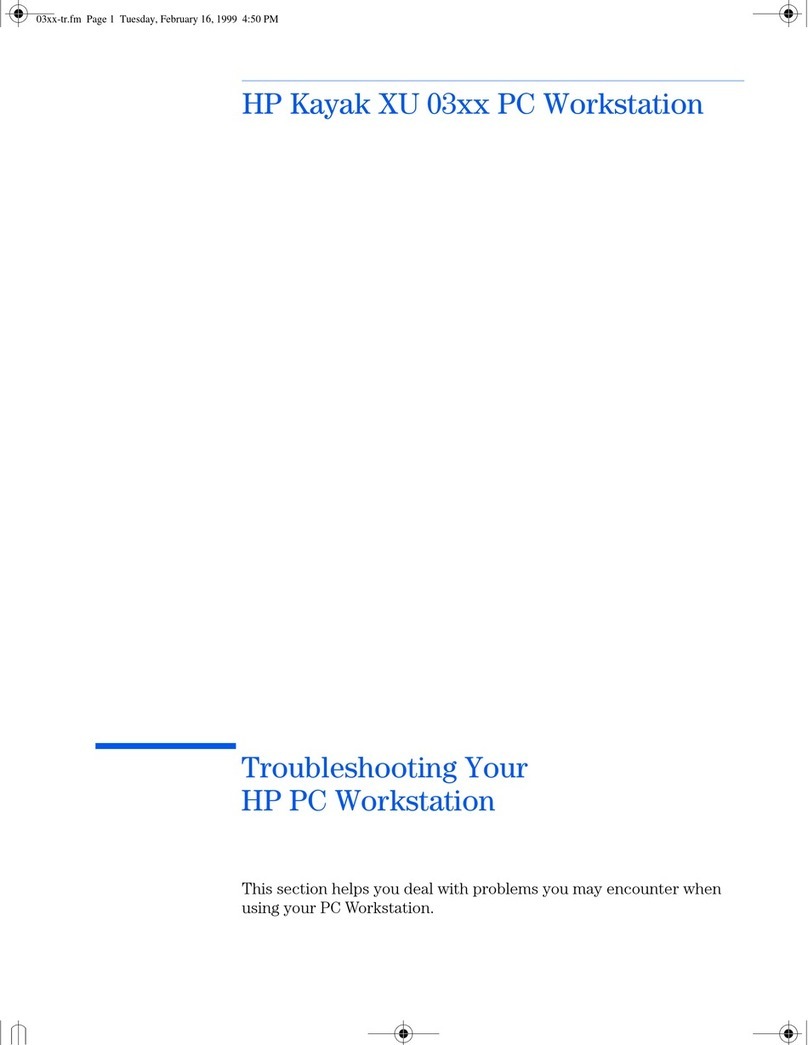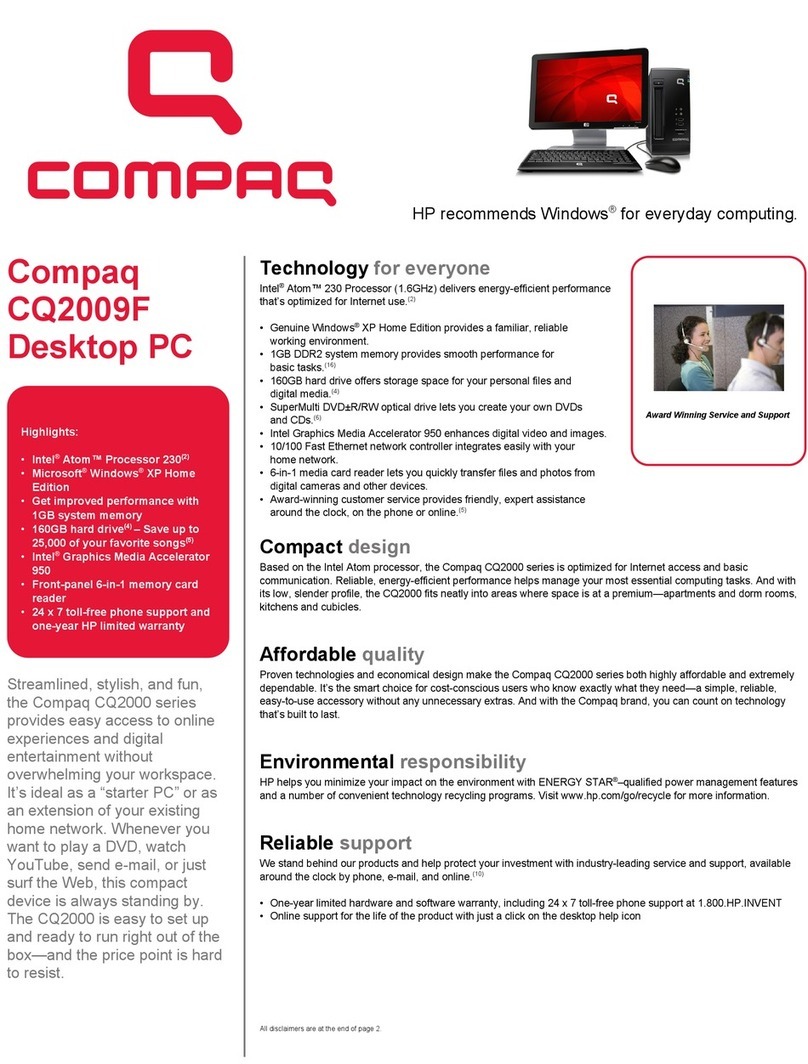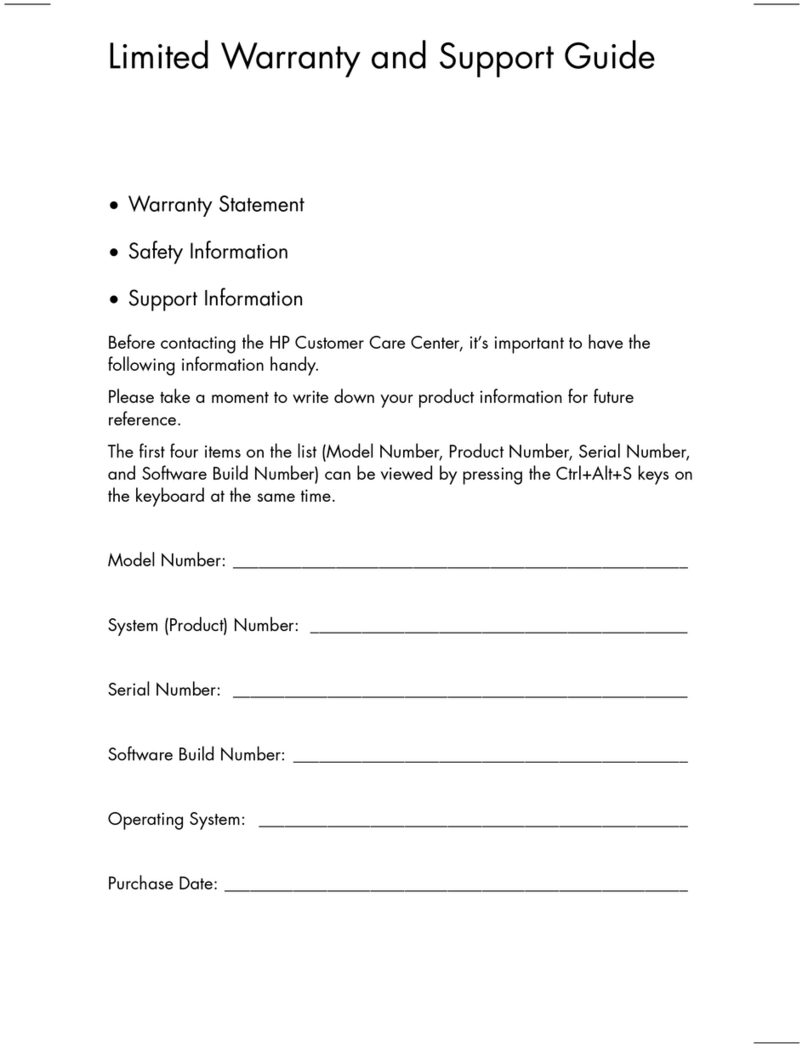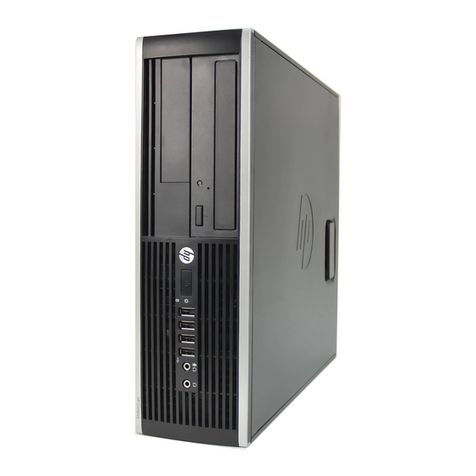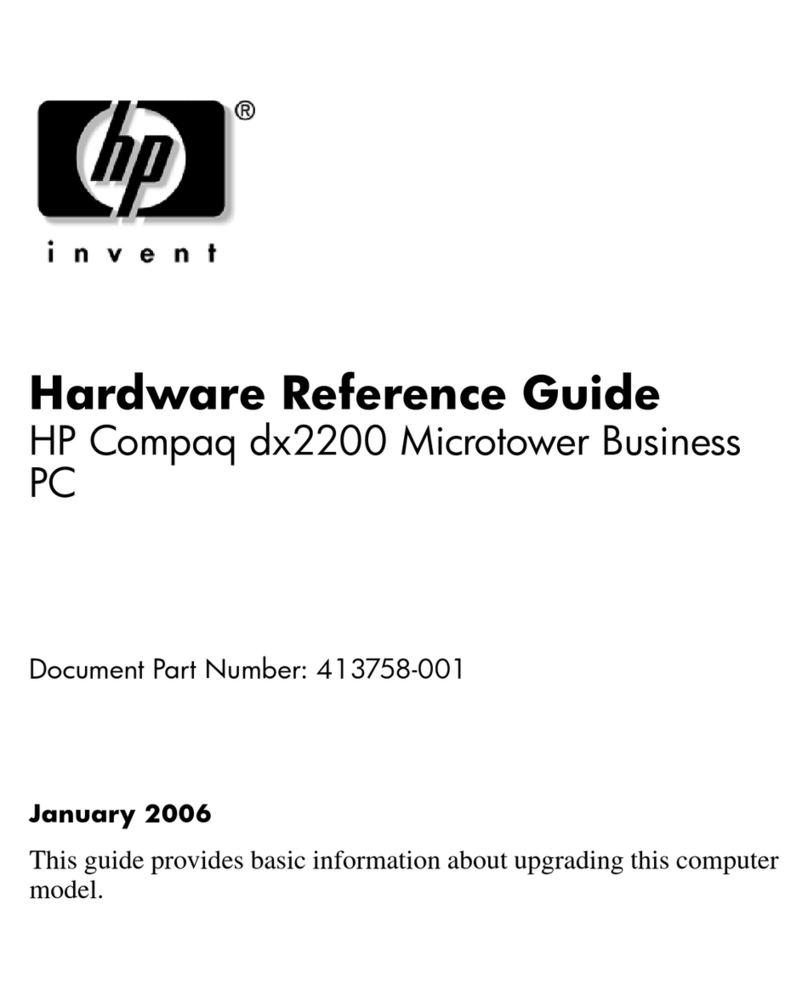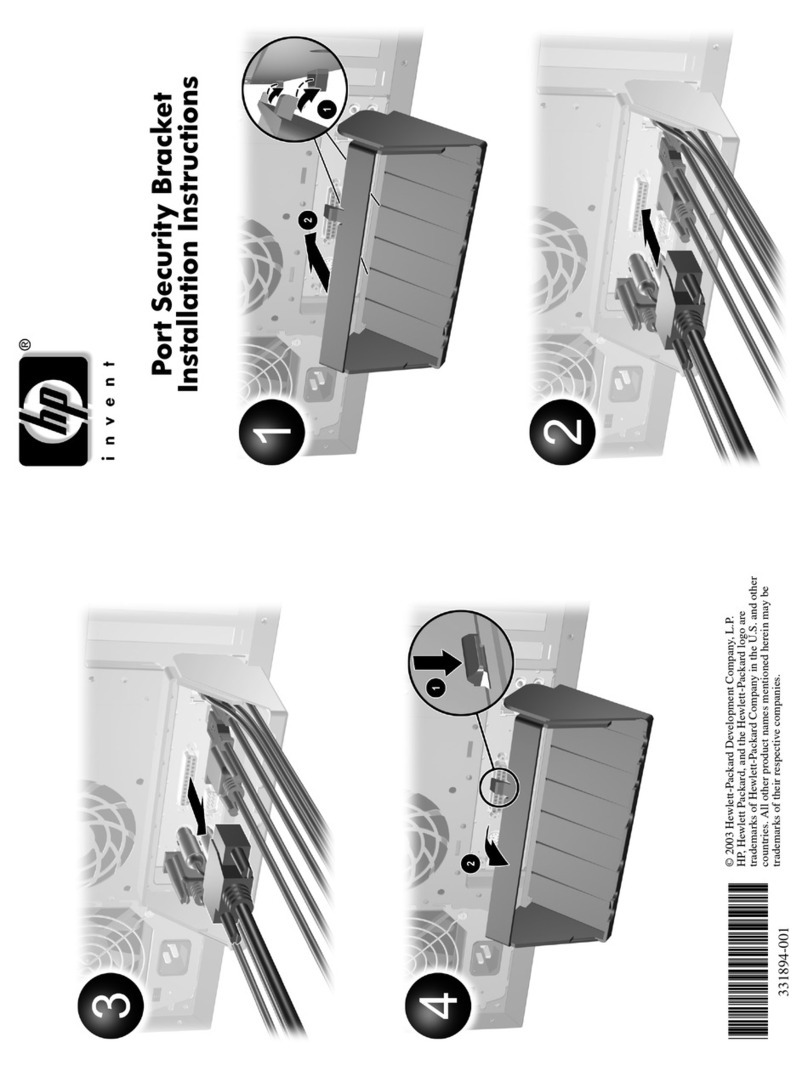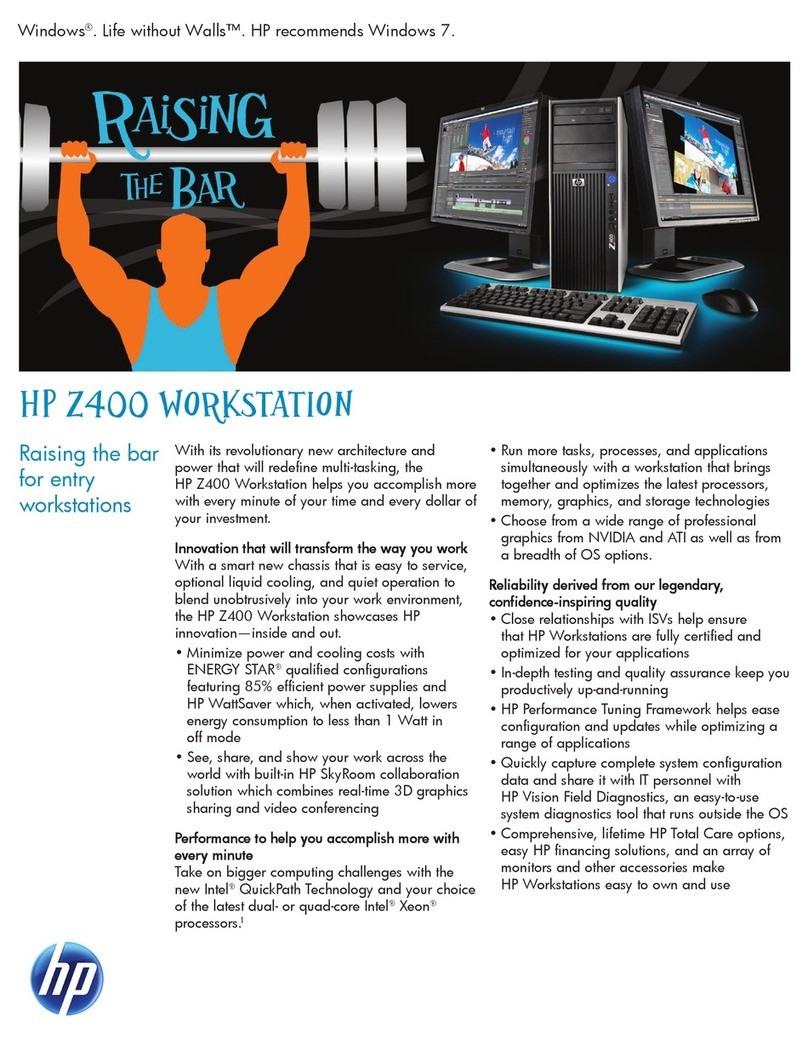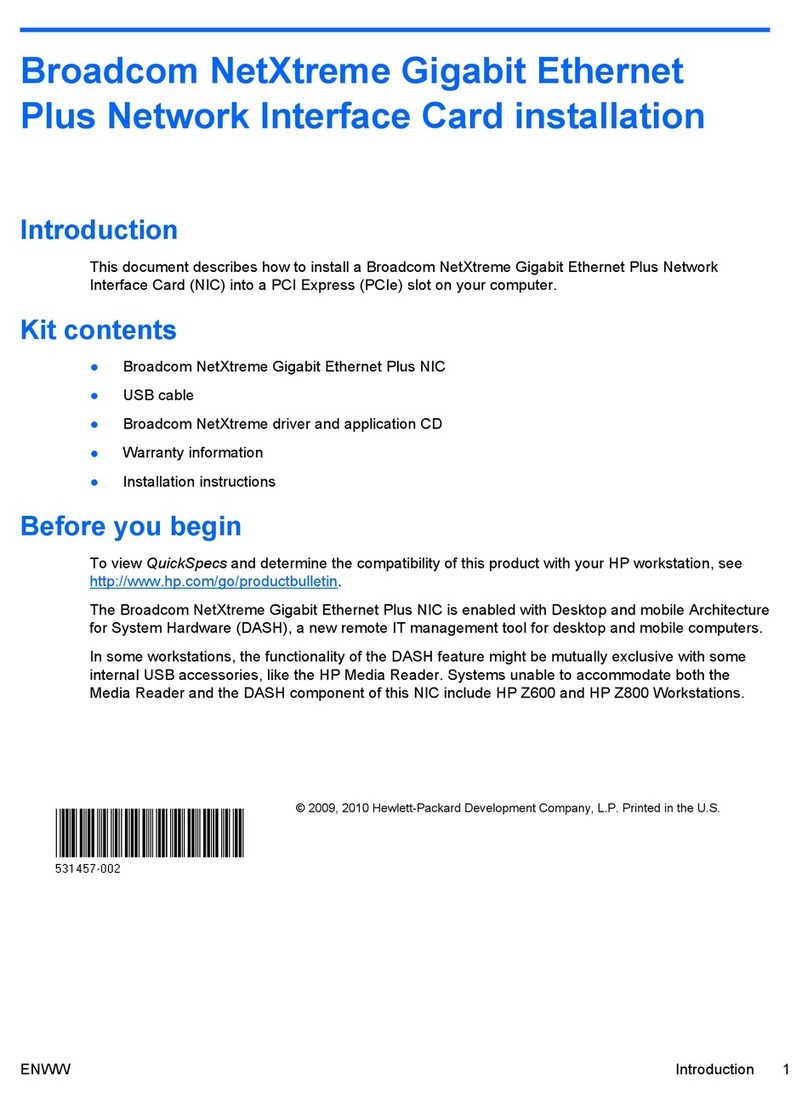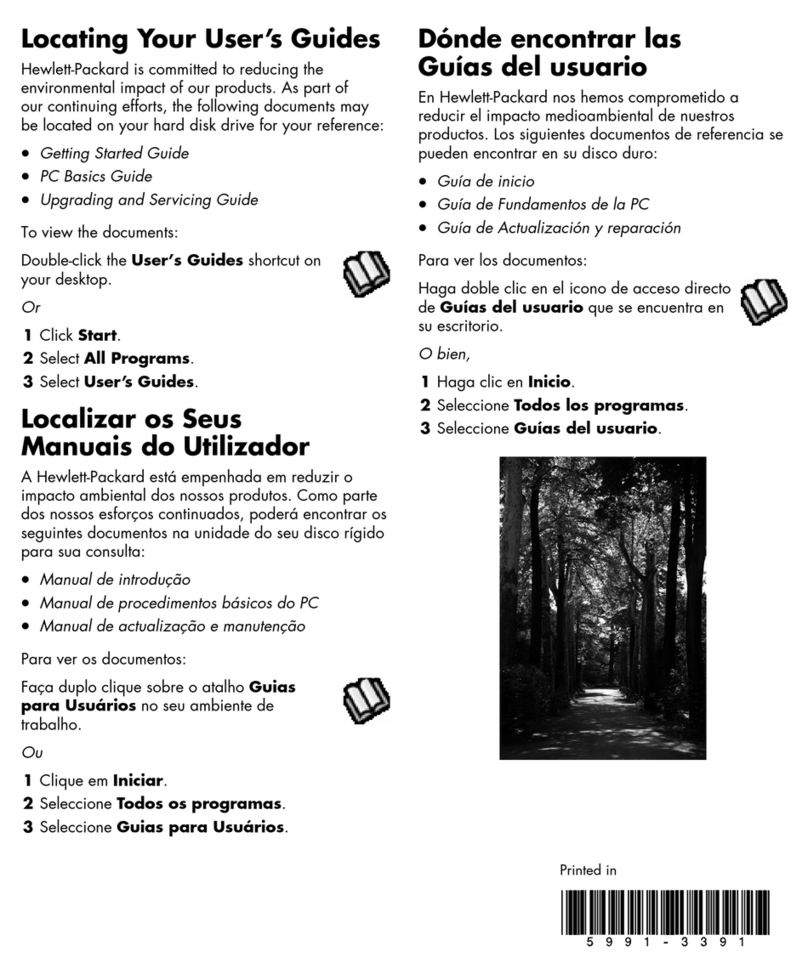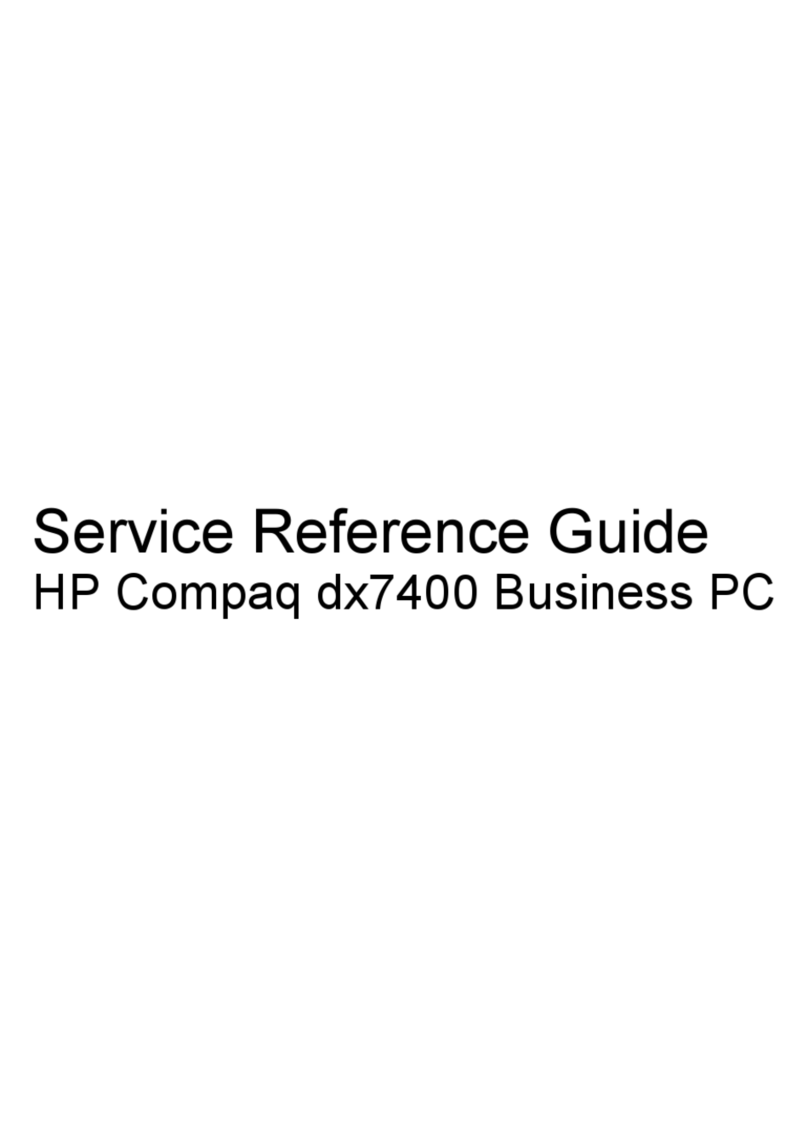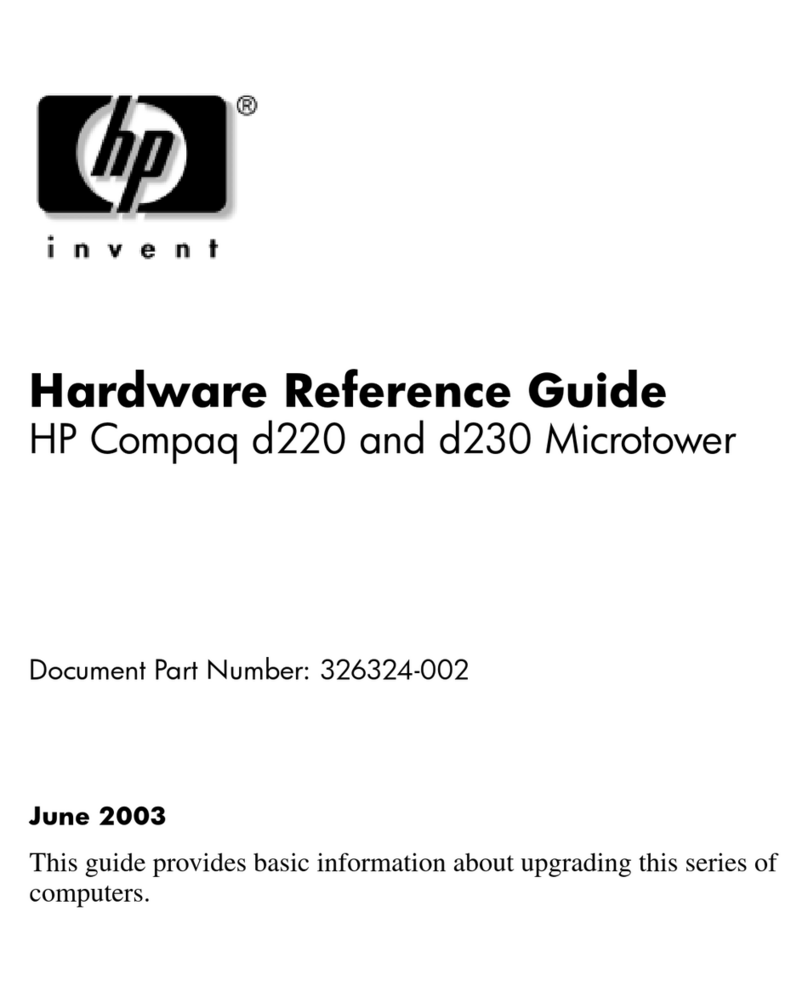
To change or delete a User or Supervisor password:
1. Turn on or restart the computer. If you are in Windows, click Start >
Shut Down > Restart.
2. When the Enter Password box displays, type the current User password, if required, and
then press Enter.
3. Press and hold the F10 key until you enter Computer Setup. Press Enter to bypass the
title screen, if necessary.
4. When the Enter Password box displays to access Computer Setup, type the current
Supervisor password, if required, and then press Enter.
5. Select either Set Supervisor Password or Set User Password.
6. If you want to change the password, when the Enter Password box displays, type the
new password, and then press Enter.
7. If you want to delete the password, when the Enter Password box displays, press Enter
instead of entering the new password. This deletes the current password.
8. To save changes and exit Computer Setup, click File > Save Changes and Exit.
To disable or clear the User or Supervisor passwords:
1. Shut down the operating system properly, then turn off the computer and any external
devices, and disconnect the power cord from the power outlet.
2. Press the power button again to drain the system of any residual power.
3. Remove the access panel.
4. Locate the header and jumper.
NOTE: The password jumper is green so you easily identify it. For assistance locating the
password jumper and other system board components, see the system’s Illustrated Parts
Map (IPM). You can download IPMs from www.hp.com/support.
5. Remove the jumper from pins 1 and 2. Place the jumper on pins 2 and 3.
6. Replace the access panel and reconnect external equipment.
7. Plug in the computer and turn on power. Allow the operating system to start.
8. To establish new passwords, repeat steps 1 through 4, replace the password jumper on
pins 1 and 2, then repeat steps 6 through 8. Establish the new passwords in Computer
Setup. Refer to the Computer Setup (F10) Utility Guide on the Documentation CD for
Computer Setup instructions.
To clear CMOS:
1. Power down the computer and disconnect the power cord from the AC outlet.
NOTE: The CMOS button will not clear CMOS if the power cord is connected.
2. Remove the access panel.
3. On the system board, slide and hold the CMOS switch for 5 seconds after the standby
LED turns off.
4. Replace the access panel and reconnect the power cord.
NOTE: You will receive POST error messages after you clear CMOS and reboot that indicate
that configuration changes have occurred. Use Computer Setup to reset passwords and any spe-
cial system setups along with the date and time.
NOTE: Support for security features varies depending on computer configuration.
[1] For more information about Computer Setup, see the Computer Setup (F10) Utility Guide on
the Documentation CD.
Diagnostic Functions
Diagnostic functions are provided by the Setup Utility (in system ROM) and by Diagnostics for
Windows. The Diagnostics for Windows utility is a component of Intelligent Manageability that
allows you to view information about the hardware and software configuration of the computer
while running Microsoft Windows. It also allows you to perform hardware and software tests on
the subsystems of the computer.
Diagnostics for Windows provides detailed system information including:
• Processor type and speed
• Memory amount, mapping, and integrity
• Hardware peripheral availability/settings
• Hard drive type, space used/available
• System identification, asset tracking
Diagnostic Functions (continued)
When you invoke Diagnostics for Windows, the current configuration of the computer is shown
in the Overview screen. This screen provides access to several categories of information about
the computer and the Test tab. You can print or save the information in every screen of the utility
to a file. Diagnostics for Windows may be preinstalled on some models and can be downloaded
from www.hp.com/support/files.
*Blinks repeated after 2 second pause. Beeps stop after 5 iterations.
Security Features
Feature Description
Supervisor
Password
Allows you to set and enable Supervisor (administrator) password.
NOTE: If the Supervisor password is set, you must enter it to change Computer
Setup [1] options, flash the ROM, and make changes to certain plug and
play settings under Windows.
See the Troubleshooting Guide on the Documentation CD for more information.
User
Password
Allows you to set and enable a User password.
NOTE: If the User password is set, you must enter it to access the computer.
See the Troubleshooting Guide on the Documentation CD for more information.
Device
Security
Enables/disables serial ports, parallel port, front USB ports, system audio, and
network controllers.
Network
Service
Boot
Enables/disables the computer’s ability to boot from an operating system
installed on a network server. (Feature available on NIC models only; the
network controller must reside on the PCI bus or be embedded on the sys bd.)
System IDs Allows you to set:
• Asset tag (18-byte ID) and ownership Tag (80-byte ID displayed at POST).
• Chassis serial number or Universal Unique Identifier (UUID) number. You can
update the UUID only if the current chassis serial number is invalid.
• Keyboard locale setting (i.e., English or German) for System ID entry.
Master
Boot
Record
Security
Allows you to enable or disable Master Boot Record (MBR) Security.
When enabled, the BIOS rejects all requests to write to the MBR on the current
bootable disk. Each time the computer is powered on or rebooted, the BIOS
compares the MBR of the current bootable disk to the previously-saved MBR. If
the BIOS detects changes, it allows the option of saving the MBR on the current
bootable disk, restoring the previously-saved MBR, or disabling MBR Security.
You must know the supervisor password, if one is set.
NOTE: Disable MBR Security before intentionally changing the formatting or
partitioning of the current bootable disk. Several disk utilities (such as
FDISK and FORMAT) attempt to update the MBR.
If MBR Security is enabled and disk accesses are being serviced by the BIOS,
write requests to the MBR are rejected, causing the utilities to report errors.
If MBR Security is enabled and the operating system is servicing disk accesses,
BIOS detects MBR changes during the next reboot and displays an MBR
Security warning message.
Computer Diagnostic LEDs (front of computer)
LED Color Activity State/Message
Green On Computer on (normal operation).
Green 1 blink/2 seconds Suspend Mode.
Green 1 blink/2 seconds Suspend to RAM.
Red 2 blinks, 1 second apart CPU thermal shutdown.
Red 3 blinks, 1 second apart CPU not installed.
Red 4 blinks, 1 second apart Power supply overload.
Red 5 blinks and beeps, 1 second apart* Pre-video memory error.
Red 6 blinks and beeps, 1 second apart* Pre-video graphics error.
Red 7 blinks and beeps, 1 second apart* System board failure.
Red 8 blinks and beeps, 1 second apart* Invalid ROM.
Red 9 blinks and beeps, 1 second apart* System powers on unable to boot.
Red 10 blinks and beeps, 1 second apart* Bad option card.
Common POST Error Messages
Screen Message Probable Cause Recommended Action
BIOS ROM
checksum error–
System halted
The checksum of the BIOS code
in the BIOS chip is incorrect,
indicating that the BIOS code
may be corrupt.
Contact your system dealer to replace
the BIOS.
CMOS battery
failed
The CMOS battery is no longer
functional.
Contact your system dealer for a
replacement battery.
CMOS checksum
error—Defaults
loaded
Checksum of CMOS is incorrect,
so the system loads the default
equipment configuration. A
checksum error may indicate that
CMOS is corrupt. A weak
battery can cause this error.
Check the battery and replace, if
necessary.
CPU at nnnn Displays running speed of CPU. None.
Press ESC to skip
memory test
The user may press Esc to skip the
full memory test.
HARD DISK
INSTALL-
FAILURE
Cannot find or initialize the hard
drive controller or the drive.
Make sure the controller is installed
correctly. If no hard drives are
installed, be sure the Hard Drive
selection in Setup is set to NONE.
Keyboard error or
no keyboard
present
Cannot initialize the keyboard. Make sure the keyboard is attached
correctly and no keys are pressed
during POST. To purposely configure
the system without a keyboard, set
the error halt condition in Setup to
HALT ON ALL, BUT KEYBOARD.
The BIOS then ignores the missing
keyboard during POST.
Memory Test: This message displays during a
full memory test, counting down
the memory areas being tested.
None.
Memory test fail If POST detects an error during
memory testing, additional
information appears giving
specifics about the type and
location of the memory error.
Shut down the system, reseat the
DIMMs, and reboot the system. If the
problem persists, contact the system
dealer for a replacement.
Override enabled–
Defaults loaded
If the system cannot boot using
the current CMOS configuration,
BIOS can override the current
configuration with a set of BIOS
defaults for the most stable
minimal performance system.
None.
Error: Non-
System disk or
disk error Replace
and press any key
when ready
The BIOS was unable to find a
suitable boot device. This may
mean an uninitialized or corrupt
ATA f l a s h .
Shut down the system, ensure that the
power and data cables of all storage
devices are plugged in properly, and
reboot the system. If the problem
persists, contact an authorized service
center for assistance.
Warning: CPU fan
has failed
CPU fan weak (RPM < 1000) or
not turning.
Ensure that the CPU fan power cable
is connected. If the problem persists,
contact an authorized service center.
Warning: System
Fan has failed
System fan weak (RPM < 1000)
or not turning.
Ensure the system fan power cable is
connected. If the problem persists,
contact an authorized service center.
Memory is
running at Single
Channel Mode
When two same size memories
are put in slot 1 and 3, this
message displays.
For optimal performance, shut down
the system and move the second
DIMM from the XMM3 to the
XMM2 socket.
Memory is in 64
bit mode. Move
memory modules
to slots 1 and 2 for
best performance.
When two of the same size/
density memories are inserted
into slot 1 and 3, this message
displays.
For optimal performance, shut down
the system and move the memory
modules to the XMM1 and XMM2
sockets.
Warning: Bad
memory config.
Move memory
module(s) to slot
1 (and slot 2).
Found DIMM3 alone, or DIMM3
and DIMM4 are populated when
DIMM1 is alone, or DIMM1 and
DIMM2 are not populated.
Shut down the system and move
memory modules to XMM1 and
XMM2 sockets.
Warning: Memory
configuration is
not supported.
Please see user
documentation for
recommended
memory configs.
Found unsupportable memory
configuration. Configure to boot
at DDR333, the smallest DIMM
size available in 64bit mode.
Consult the user documentation to
determine recommended memory
configurations. Then shut down the
system and move the memory to an
appropriate configuration.
